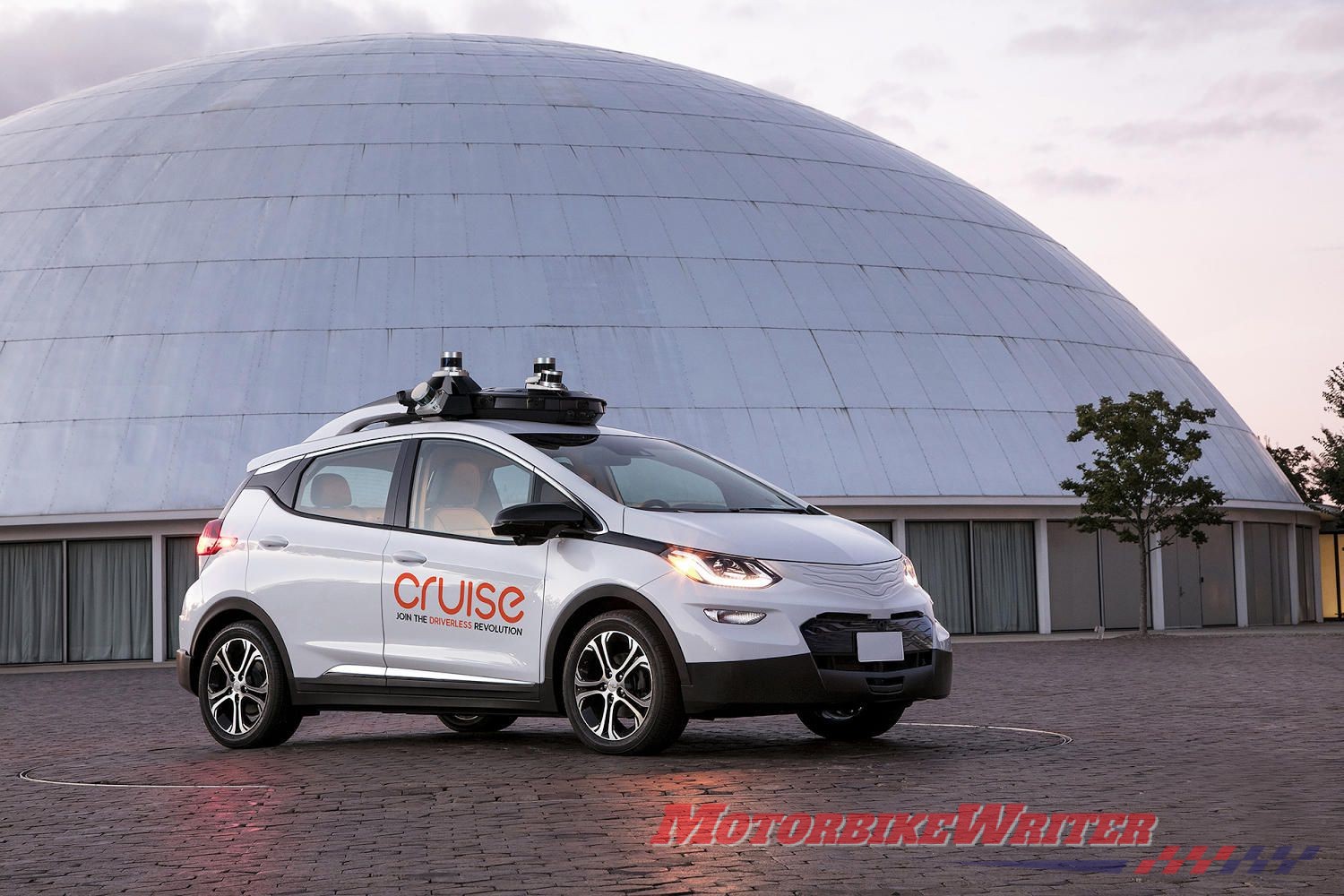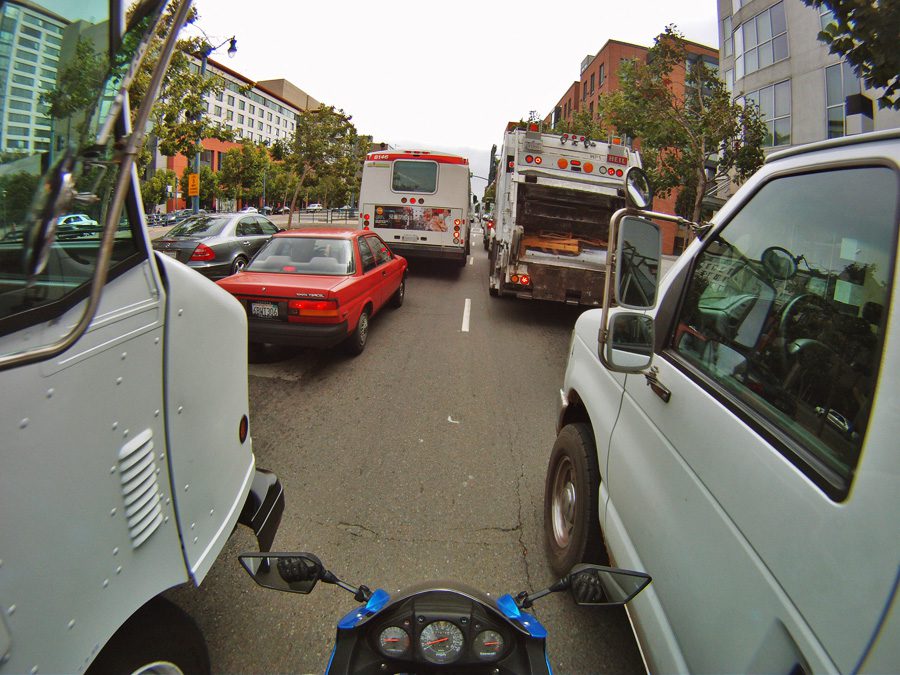Autonomous vehicles have been dealt a blow recently with a lane-splitting rider deciding to sue GM for a crash involving one of their self-driving cars.
This comes as a Tesla Model S also recently crashed into a parked fire engine in Los Angeles while the car was on Tesla’s Autopilot driver assistance system.
The National Traffic Safety Board is examining the crash, prompting Tesla to make this statement: “Autopilot is intended for use only with a fully attentive driver.”
GM crash
We also recently reported on the incident of a lane-splitting rider being hit by a General Motors Chevrolet Bolt EV being driven in autonomous mode.

In that low-speed incident, the San Francisco police blamed the rider, Oscar Nilsson.
However, Oscar is now suing General Motors.
GM says the Bolt EV was driving in the centre of a three-lane street and attempted the change lane to the left, but detected a small gap and changed back into its centre lane.
That is when it hit Oscar’s 1996 Honda S90 motorcycle as he moved into the vacated lane space.
GM has given no indication of whether indicators were used.
The Bolt was travelling at 12mph (19km/h) and the bike at 17mph (27km/h).
Suing GM
Oscar is suing GM, claiming his neck and shoulder were injured in the crash.
He says he will need “lengthy treatment” that have “forced” him to take a leave of absence from work.
The lawsuit is seeking more than $US75,000 (about $a93,500, €60,500).
Good luck in suing a monster company like GM. However, at least it may give car markers some cause for concern about their mad rush into autonomous vehicles.
Autonomous setback
These incidents deepen the controversy of autonomous vehicles, their testing, the legal ramifications and the danger posed to motorcycle riders.
Motorcycles seem to be overlooked in the mad rush to test and introduce autonomous self-diving vehicles.
In May 2017, a 24-page Austroads and National Transport Commission report on guidelines for trials of autonomous vehicles made no mention at all of motorcycles, although bicycles were mentioned.
This is despite the European Community temporarily suspending all autonomous vehicle testing until motorcycles were included after a female motorcycle rider was rear-ended by an automated Tesla S under test in Norway.
Australian Motorcycle Council representative Guy Stanford has called on authorities to slow down the testing and introduction of autonomous vehicles.
Autonomous take-up
Meanwhile, analytics service Defin’d has identified the suburbs in Sydney, Melbourne, Brisbane and Perth that are likely to have the highest take-up of autonomous vehicles.
They include suburbs with high household incomes, “early adopters” of technology, and motoring enthusiasts.
Melbourne suburbs: Port Melbourne, South Melbourne, Southbank, Melbourne, South Yarra, Toorak, Malvern, Malvern East, Hawthorn, Kew, Glen Iris, Camberwell, Canterbury, Balwyn, Balwyn North, Doncaster, Templestowe, Doncaster, Glen Waverly, Brighton.
Sydney suburbs: Baulkham Hills, Castle Hill, West Pennant Hills, Wahroonga, St Ives, Pymble, Killara, Lindfield, Roseville, Chatswood, Artarmon, Hunters Hill, Mosman, Vaucluse, Pyrmont, Sydney, Alexandria, Bellevue Hill, Woollahra
Brisbane suburbs: Kenmore, Chapel Hill, Indoropilly, Bardon, Ashgrove, Brisbane City, Spring Hill, Paddington, Fortitude Valley, Teneriffe, Bulimba, Ascot, Clayfield, Coorparoo, Camp Hill, Carindale, Sunnybank Hills, Calamvale
Perth suburbs: Duncraig, Stirling, Osborne Park, Mount Hawthorn, Wembley, Floreat, City Beach, Subiaco, West Perth, Perth, South Perth, Nedlands, Claremont, Dalkeith, Cottesloe, South Perth, Dalkeith, Mosman Park, Applecross, Mount Pleasant, Bentley



